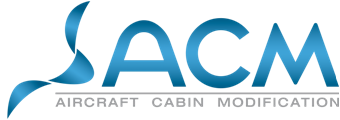Memmingen (Germany), 14th June 2021 – ACM Aerospace (Aircraft Cabin Modification GmbH) presents a new sensor technology for seats with Avital, which measures the ECG values of the occupants without the need for wiring. Not only are health problems detected in real time, but also signs of exhaustion and stress in the pilot. This means that any necessary countermeasures can be taken in good time. This world first also earned ACM Aerospace a nomination for the prestigious Crystal Cabin Award 2021.
ACM Aerospace is setting new standards in aircraft passenger safety with its latest innovation, Avital. The sophisticated sensor technology, which is installed directly in the seats, means that the electrocardiogram (ECG) of the occupants can be monitored without the need for wiring or any skin contact – and with the highest medical resolution.
Rapid response to emergencies
Vital human parameters are measured as soon as the seat equipped with Avital sensors is used. The corresponding values are checked live against one of the largest medical databases to obtain the best analysis results. This means that health emergencies can be responded to as quickly as possible. The Avital fatigue assistant also warns users, such as pilots, when symptoms like exhaustion or declining concentration develop. The person or a designated (ground) authority is then requested to take countermeasures.
Early detection increases safety
The data obtained in this way also enables a long-term analysis, i.e. the state of health is logged and monitored over a longer period of time. "As soon as any abnormalities occur, it is possible to initiate medical examinations in good time and avoid serious illnesses," explains ACM Aerospace Managing Director Roger Hohl.
Capacitive sensors deliver interesting results
Avital is made of capacitive textile sensors that are integrated directly under the fabric of the backrest as well as the seat surface. This makes it possible to evaluate the heart rate, heart rate variability, breathing rate and other deducible parameters. There are many uses for it: Pilot and passenger seats in aircraft and helicopters, in rescue flights and space travel or also as a display in the in-flight entertainment system as information for the passenger. "The range of applications is very diverse and yet easy to use. We are absolutely convinced that this innovation will make aviation much safer in all respects, and for all occupants. Crew and passengers!" concludes Roger Hohl, ACM Managing Director.




